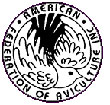10 Tips to Help your Dog Walk on a Loose Leash
1. Match your reinforcer with the distraction level of the environment. Your dog gets to decide what’s reinforcing and what’s not, remember? And kibble or praise isn’t going to work to reinforce your dog’s good behavior in the big wide world! Break out the “big guns:” cheese, chicken, beef, freeze dried liver, the tennis ball – whatever your dog likes best.
2. Keep your reward in the same side hand as your dog is on. For example, if you prefer your dog walk on the right, keep your treats in your right hand. The leash will be in the other hand, crossing over your body. It feels funny at first, but stick with it – this will keep your dog from stepping on your feet when it’s time to reward, and keep him from crossing in front of you when you’re trying to walk.
3. Reinforce eye contact. A dog who makes eye contact occasionally is by default going to pay better attention to you. If your dog checks in automatically, reward. If he doesn’t…
4. Talk to your dog. As soon as you step out the door, you are immediately the most boring thing in the environment to your dog – they see you all the time! If you chatter to them, touch them, smile and play with them on your walk, you’ll be more interesting … and then you can do step 3.
5. Don’t use a retractable (or Flexi) leash. Your dog can feel the tension on the leash that the retracting mechanism creates, and as soon as he leans into that tension … well, what do you know, he gets to go where he wants! This becomes a ingrained habit very quickly. If your dog is ALREADY trained to walk nicely on leash, then you can go ahead and use your retractable sometimes, but only once leash manners are very solid.
6. Practice off-leash. In your house or yard. Seriously – you will get a pretty good picture of just how much you use that leash to control your dog – by definition making it tight. If there’s no leash, you get REALLY good at controlling your dog with other tools.
7. Use some equipment. We recommend the Gentle Leader, Halti, Easy Walk Harness, and Freedom Harness. These are fantastic tools that do not cause your dog any pain or choke them. Head halters like the Halti and Gentle Leader take some time to teach your dog to wear at first – here are instructions on how to do that.
8. Do not let your dog get to what he wants without working for it first. It takes about 5 seconds to ask your dog to “sit,” and then release them to pee on their favorite post or greet the neighbor’s dog. This Say Please training is very powerful. If you let your dog pull you over there, that’s what you’re reinforcing. If you have your dog “sit” then walk nicely on the way over there, that’s what you’re reinforcing.
9. Teach a leave-it. A really good one. We don’t mean you yell “leave it” and then haul your dog along; we mean a “leave it” that teaches your dog to look away from what they were looking at, on leash or off. This is not that hard and can make your walks so much more pleasant.
10. Consistency. Get everyone who interacts with your dog on the same page. Be explicit with your family and dog walker on what you want them to do. Dogs love to gamble and they LOVE the game of “maybe today’s the day I can pull on my leash!!”
Tried it and it’s not working? Well, this is an article on the internet, not a dog training lesson! Contact us and let us know where you’re getting stuck – we can help you!







